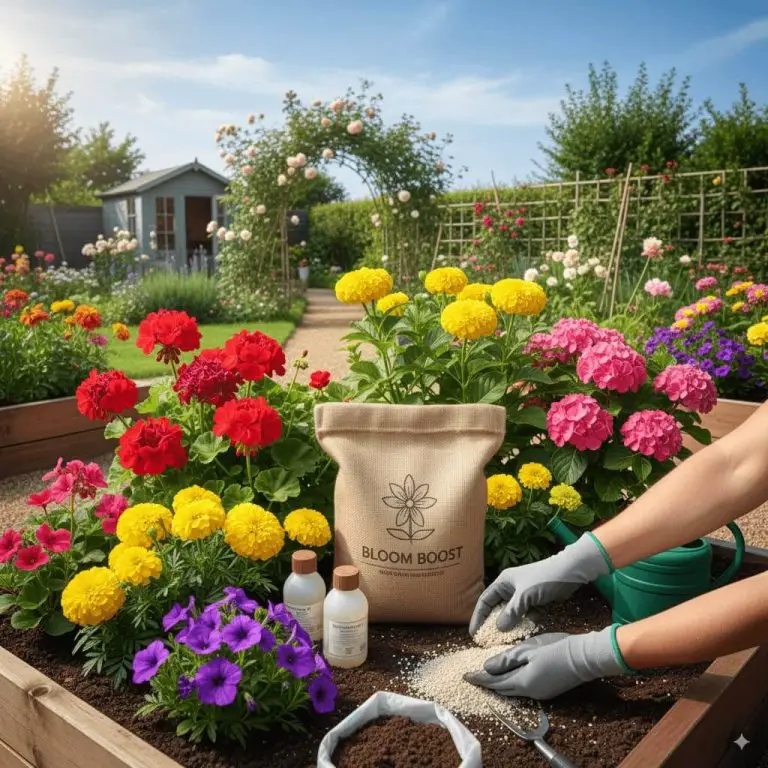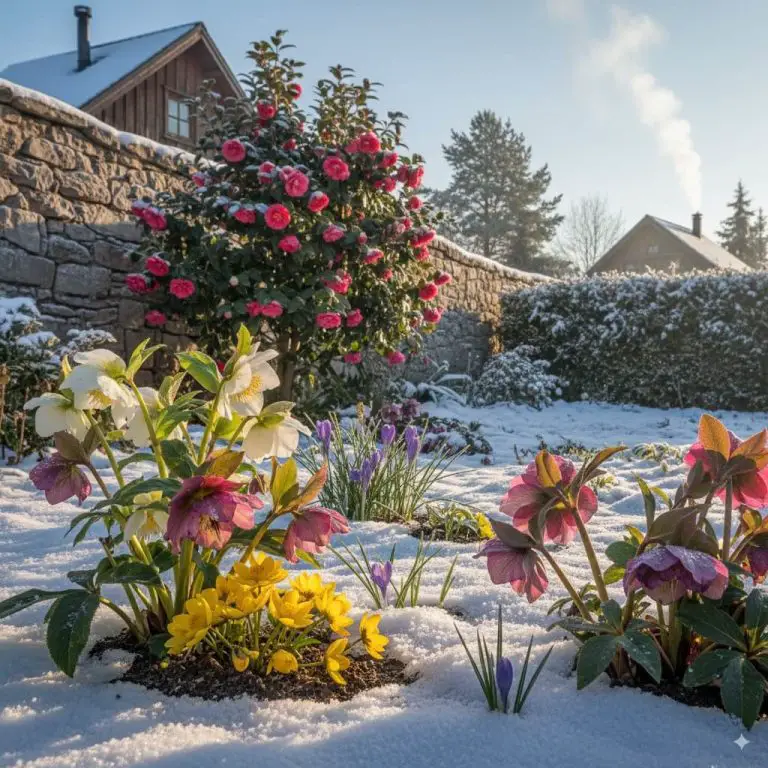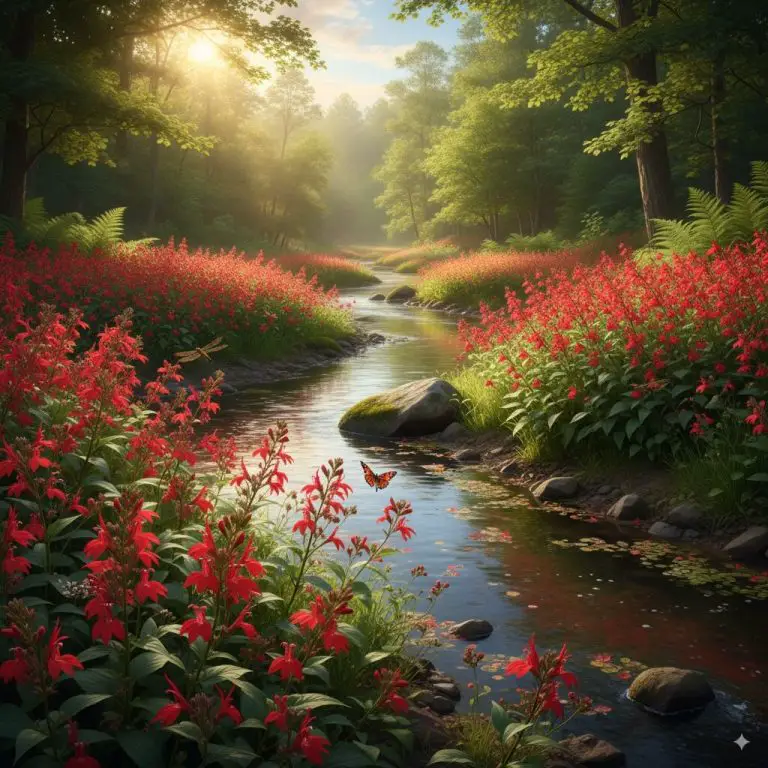June Flowering Plants – Your Ultimate Guide To A Radiant Summer Garden
There’s a special kind of magic in the air in June, isn’t there? The days are long and warm, and the garden seems to explode with life. But sometimes, there’s a frustrating lull—the spring bulbs have faded, and the high-summer stars haven’t quite taken the stage yet. It can leave your garden looking a little… underwhelming.
I promise you, it doesn’t have to be that way. With a little planning, you can turn your garden into an absolute masterpiece of color and fragrance. This guide is your personal roadmap to the most beautiful june flowering plants, ensuring your outdoor space is a vibrant, buzzing paradise right when you want to enjoy it most.
We’ll walk through the absolute best flowers for this perfect month, from show-stopping perennials to easy-care favorites. You’ll learn exactly how to care for them, solve common problems, and even make your garden more eco-friendly. Let’s get those hands dirty and create a June garden that will be the envy of the neighborhood!
What's On the Page
- 1 Why June is the Perfect Month for a Floral Spectacle
- 2 Our Top 10 Must-Have June Flowering Plants for Every Garden
- 3 Your Essential June Flowering Plants Care Guide
- 4 Sustainable and Eco-Friendly June Flowering Plants Practices
- 5 Solving Common Problems with June Flowering Plants
- 6 Frequently Asked Questions About June Flowering Plants
- 7 Your Radiant June Garden Awaits
Why June is the Perfect Month for a Floral Spectacle
June marks the glorious transition from the gentle blush of spring to the full-throated roar of summer. The sun is higher, the days are longer, and the soil is perfectly warm—creating the ideal conditions for plants to put on their best show. This is the month when your garden truly comes alive.
The benefits of june flowering plants extend far beyond just looking pretty. A garden bursting with blooms becomes a vital hub for pollinators like bees and butterflies, whose activity peaks during this time. Planting for June means you’re not just creating beauty; you’re supporting an entire ecosystem right in your backyard. Plus, the sheer joy of stepping outside to a wave of color and scent is a powerful mood-booster!

🌿 The Companion Planting & Gardening Book (eBook)
Bigger harvests, fewer pests — natural pairings & simple layouts. $6.99
Get – $6.99
🪴 The Pest-Free Indoor Garden (eBook)
DIY sprays & soil tips for bug-free houseplants. $4.89
Get – $4.99Our Top 10 Must-Have June Flowering Plants for Every Garden
Ready for the fun part? Here is a curated list of my absolute favorite, tried-and-true plants that shine brightest in June. This june flowering plants guide covers a range of styles and needs, so you’re sure to find a few new friends for your garden beds.
1. The Classic Rose (Rosa)
Nothing says “June garden” quite like the timeless elegance of a rose. From climbing varieties that scramble over arches to shrub roses that form the backbone of a border, their velvety petals and intoxicating fragrance are simply unmatched.
Greeny Gardener Pro Tip: For incredible blooms, feed your roses with a high-potassium fertilizer (like tomato feed) once the buds start to form. It’s a little secret that encourages huge, healthy flowers.
2. The Romantic Peony (Paeonia)
Peonies are the queens of the late-spring, early-summer garden. Their enormous, ruffled blooms in shades of pink, white, and crimson are breathtaking. They may be fleeting, but their dramatic beauty makes them an absolute must-have.
Greeny Gardener Pro Tip: When planting peonies, ensure the “eyes” (small reddish buds on the root) are no more than an inch or two below the soil surface. Planting them too deep is the number one reason they fail to flower!
3. The Majestic Delphinium (Delphinium)
For sheer vertical drama, you can’t beat delphiniums. Their towering spires of blue, purple, and white flowers add height and structure to the back of a border. They are a true showstopper that commands attention.
Greeny Gardener Pro Tip: Delphiniums are hollow-stemmed and prone to snapping in the wind. Stake them early, before they get too tall, to give them the support they need to stand proud.
4. The Charming Foxglove (Digitalis purpurea)
A cottage garden classic! Foxgloves bring a whimsical, fairytale feel with their tall, bell-covered spires. They are biennials, meaning they grow foliage in their first year and flower in their second, but they self-seed readily to ensure a continuous display.
Greeny Gardener Pro Tip: Foxgloves are perfect for those slightly shadier spots where other sun-lovers might struggle. They thrive in dappled light under trees or along a woodland edge.
5. The Architectural Allium (Allium)
Alliums are the exclamation points of the garden. Their spherical flower heads, held high on leafless stems, provide a modern, structural look. Pollinators absolutely adore them, and their seed heads remain attractive long after the color has faded.
Greeny Gardener Pro Tip: Plant allium bulbs in the autumn for a spectacular June display. Plant them deep—about three times the depth of the bulb—to ensure they come back year after year.
6. The Hardy Geranium (Geranium ‘Rozanne’)
Not to be confused with the tender pelargoniums often seen in pots, hardy geraniums (or cranesbill) are workhorse perennials. They form lovely mounds of foliage and produce a profusion of simple, beautiful flowers for months on end, starting in June.
Greeny Gardener Pro Tip: If your geranium starts to look a bit tired and leggy mid-summer, don’t be afraid to give it a haircut! Shearing it back by about half will encourage a fresh flush of foliage and a second wave of flowers.
7. The Vibrant Salvia (Salvia nemorosa)
For an intense splash of violet-blue, ‘Caradonna’ or ‘May Night’ salvias are unbeatable. These tough, drought-tolerant perennials produce dozens of upright flower spikes that are magnets for bees. They look fantastic planted in large drifts.
Greeny Gardener Pro Tip: Deadhead salvias religiously. As soon as a flower spike starts to fade, snip it off at the base. This encourages the plant to produce new spikes, extending the flowering season well into late summer.
8. The Effortless Catmint (Nepeta)
If you want a plant that is beautiful, tough as nails, and asks for almost nothing in return, look no further than catmint. Its hazy clouds of lavender-blue flowers and aromatic, grey-green foliage create a soft, informal look. It’s perfect for edging paths.
Greeny Gardener Pro Tip: Catmint is incredibly drought-tolerant once established, making it a fantastic choice for a low-water or low-maintenance garden. Don’t worry—these flowers are perfect for beginners!
9. The Elegant Bearded Iris (Iris germanica)
With their intricate, ruffled petals, bearded irises bring a touch of old-world elegance to the garden. They come in every color imaginable and their “beards”—the fuzzy lines on their lower petals—guide bees to the nectar.
Greeny Gardener Pro Tip: Irises need their rhizomes (the fleshy root-like structures) to be baked by the sun. When planting, make sure the top of the rhizome is partially exposed above the soil.
10. The Fragrant Lavender (Lavandula)
The scent of lavender is the scent of summer. English lavender varieties typically start their stunning display in June, providing silvery foliage and iconic purple spikes that buzz with bees. It’s perfect for a sunny, well-drained spot.
Greeny Gardener Pro Tip: Prune lavender hard after flowering, but be careful not to cut back into the old, brown wood, as it may not regrow from there. This keeps the plant compact and prevents it from becoming woody.
Your Essential June Flowering Plants Care Guide
Knowing how to june flowering plants should be cared for is the key to a long and beautiful display. Following a few june flowering plants best practices will make all the difference between a garden that just survives and one that truly thrives.
Watering Wisely in Early Summer
June can bring the first real heat of the season. It’s much better to give your plants a deep, thorough soaking once or twice a week than a light sprinkle every day. This encourages roots to grow deeper into the soil where they can find moisture even on hot days. Applying a layer of mulch (like compost or bark chips) will help the soil retain that precious moisture.
Feeding for Fabulous Blooms
Flowering takes a lot of energy! Support your plants by giving them a boost. A general-purpose liquid feed applied every couple of weeks can work wonders. As mentioned earlier, high-potassium feeds are fantastic for promoting flowers and fruits on plants like roses and peonies.
The Art of Deadheading
Deadheading is simply the process of removing spent flowers. This neat trick does two things: it makes the plant look tidier, and more importantly, it stops the plant from putting energy into making seeds. Instead, the plant will redirect that energy into producing more flowers. It’s a simple task that has a huge impact on plants like salvia, geraniums, and roses.
Sustainable and Eco-Friendly June Flowering Plants Practices
A beautiful garden can also be a healthy one for the planet. Adopting a few eco-friendly june flowering plants habits makes a world of difference. Your garden will thank you, and so will the local wildlife!
- Choose Peat-Free Compost: Peat bogs are vital carbon sinks and unique ecosystems. Always opt for peat-free compost to protect these precious habitats.
- Welcome Pollinators: Many of our top June flowers, like Salvia, Catmint, and Lavender, are pollinator powerhouses. Planting them in groups provides a reliable food source for bees and butterflies.
- Conserve Water: Install a water butt to collect rainwater—it’s free and better for your plants than treated tap water. Grouping plants with similar water needs also makes watering more efficient.
- Embrace Natural Pest Control: Instead of reaching for chemical sprays, encourage natural predators like ladybugs and lacewings by planting a diverse range of flowers. A strong jet of water can often dislodge aphids just as effectively.
Solving Common Problems with June Flowering Plants
Even the most experienced gardener runs into trouble now and then. Don’t worry! Here’s how to tackle a few common problems with june flowering plants before they get out of hand.
Pesky Pests: Aphids and Slugs
Aphids love the soft, new growth on roses. You can often just squish them with your fingers or blast them off with a hose. For slugs, which love to munch on delphiniums, try using wool pellets or copper tape around pots as a deterrent.
Dealing with Powdery Mildew
This is a white, dusty coating that can appear on leaves, especially on roses and peonies, during warm, humid weather. The best defense is good prevention. Ensure your plants have good air circulation by not overcrowding them. If you spot it, remove the affected leaves and try a spray made from one part milk to nine parts water.
Why Aren’t My Peonies Blooming?
This is a classic gardener’s lament! The most common reasons are:
- The plant is too young and needs to mature.
- It was planted too deep (see our pro tip above!).
- It’s not getting enough sun—peonies need at least six hours of direct sunlight to bloom well.
Frequently Asked Questions About June Flowering Plants
What are the easiest june flowering plants for beginners?
For gardeners just starting out, I always recommend Catmint (Nepeta), Hardy Geraniums, and Salvia. They are incredibly forgiving, drought-tolerant once established, and provide a huge amount of color for very little effort.
Can I still plant flowers in June for summer color?
Absolutely! While it’s too late for some seeds, your local garden center will be full of established perennials and fast-growing annuals like Cosmos and Zinnias. You can pop them straight into your beds and containers for instant impact that will last all summer long.
How do I keep my June garden looking good into July and August?
The key is deadheading and planning for succession. Diligently deadhead your June bloomers to encourage a second flush. Also, make sure you’ve included plants that peak later in the summer, like Coneflowers (Echinacea), Black-Eyed Susans (Rudbeckia), and Dahlias, to take over as the June stars begin to fade.
Your Radiant June Garden Awaits
June doesn’t have to be a month of waiting; it can be the absolute peak of your gardening year. By choosing a mix of these reliable and beautiful june flowering plants, you create a garden that is not only stunning but also full of life and purpose.
Remember to water deeply, feed for flowers, and deadhead regularly. Most importantly, take the time to step outside, breathe in the sweet scents, and enjoy the vibrant tapestry you’ve created.
Now get out there and make your June garden shine. Happy gardening!
- African Violet Blooms Dried Up – A Pro Gardener’S 5-Step Rescue Plan - October 16, 2025
- African Violet Care Tips – Your Ultimate Guide To Lush Leaves & - October 16, 2025
- African Violet Annual Or Perennial – Unlocking Their Lifelong Blooming - October 16, 2025



